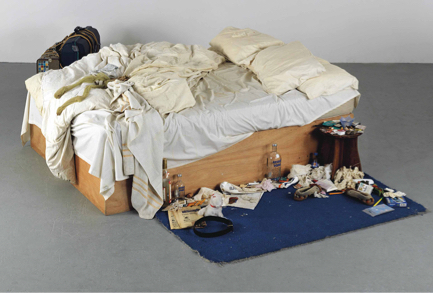
How does an artwork increase in value?
In November 2017, Leonardo da Vinci’s iconic Salvator Mundi was sold at auction for $450.3 million by Christie’s in New York City. The sale shattered the previously held record for the highest-valued piece of art, Willem de Kooning’s Interchange. But the question remains, how did a singular artwork accrue such monumental value? Art has long remained a unique and incredibly popular asset class to invest in, and commercial art brokers have facilitated some of the most groundbreaking sales on global record. Join us today as we explore how an artwork increases in value, and discover some of the most coveted sales in history!

1. The test of time
Coming in at number one is perhaps the most widely-recognized factor which increases an artwork’s value: time. In general terms, the value of an artwork is inextricably linked with its proximity to the original date of completion. Within the contemporary art world, this can be explained by standard market inflation. This allows artists to sell their work at consistently competitive prices. Moreover, as the sentimental appreciation of an artwork increases in the market, so too does its monetary value.
However, when we shift the lens to artworks created, for example, during the Renaissance, like Leonardo’s Salvator Mundi, the valuation will reflect both the piece’s enduring physical quality, as well as its immeasurable historical and cultural significance. Indeed, even the sale of Leonardo’s sketchbooks would be valued beyond seven figures. This is because his work is regarded as a relic of its time, and an invaluable insight into the artist’s famed genius and artistic process.
2. The name game
An artist’s notoriety will always have an undeniable impact on their artwork’s value. The artist’s global status, accolades, and popularity within the market all play a crucial role here. If an artist garners sudden critical acclaim or they win an award, their work can be valued at a higher price than it would otherwise have been without global recognition.
A salient example of this can be found in Tracey Emin’s unconventional My Bed, an installation of Emin’s own bed. The piece was shortlisted for the Turner Prize in 1998 for its ambitious conceptual narrative, and was soon after sold to Charles Saatchi for £150,000. Following nearly a decade of critical acclaim and the endorsement by a reputable awarding body, the artist’s bed installation was finally auctioned off in 2014 for £2.5 million.

In addition to prices, an artist’s feature at art fairs is also a good indicator of their popularity. For example, some artists have seen their prices rise after successful sales at fairs. This is the case of Louise Bourgeois. The artist saw a new record for her work Spider in 2022 on the Hauser & Wirth stand at Art Basel. The work sold for $40 million, exceeding its previous sale price. You can find out more about the other record sales of 2022 on our blog!
3. A legacy left behind
Lastly, a significant factor which increases an artwork’s valuation is the death of the artist. When a famed artist passes away, their creative legacy lives on in the art that they leave behind. Therefore, through retrospective appreciation and sentiment alone, the demand for these pieces from both private buyers and galleries will generally increase.
However, the death of the artist can also determine the artwork’s valuation in a rather more mathematical sense. When an artist dies, the amount of original art available to purchase is naturally capped at the amount that they produced during their lifetime. For example, when one original Picasso piece is bought, that’s one less original Picasso piece available to anyone else. Therefore, the death of an artist impacts the rarity of their work. This will certainly cause an increase in monetary value.

In 2022, several famous artists left us, such as Miss.Tic, Alekos Fassianos, Pierre Soulages, Jacques Villeglé or Antonio Segui. The demand for these artists, who are among the bestsellers of the year 2022, has peaked with each announcement. Alekos Fassianos, for example, was the best-selling artist on Artsper in Sweden last year.
And there you have it, a whistle-stop tour around the commercial world of art! Investing in art certainly requires a sound understanding of how the market works, and we hope you’ve enjoyed learning about some of the factors which can increase an artwork’s value. And you, what do you look for in a solid artistic investment?

About Artsper
Founded in 2013, Artsper is an online marketplace for contemporary art. Partnering with 1,800 professional art galleries around the world, it makes discovering and acquiring art accessible to all.
Learn more













